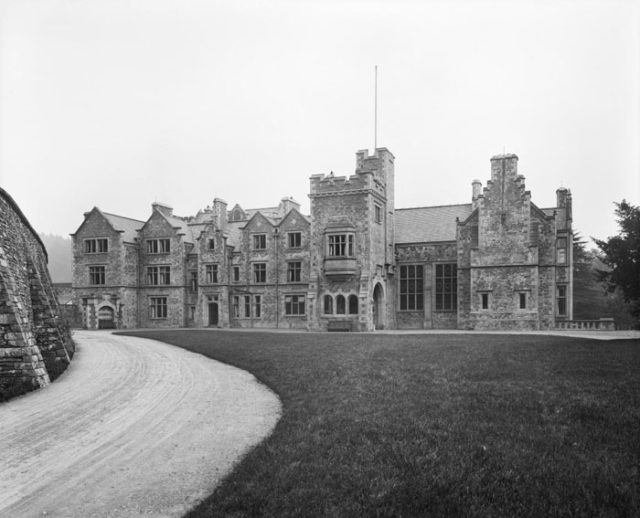Although there is a book written about his story and a movie by the same name (The One That Got Away), most people would not recognize this WWII soldier’s name or even his face. Franz von Werra, however, lived a fascinating life during WWII; primarily because he became known as the only Axis POW to escape Western custody and return to combat.
Werra was a German fighter pilot, known for his exceptional flying skills. He was captured after he was shot down over Britain. However, it was the Canadians he escaped from. His long and arduous journey took him through the United States, Mexico, Latin America and Spain before he finally made it back to his home country.
The Life and Times of the One Who Got Away
Werra was born in July 1914 in Switzerland, into a poor Swiss family. His father was bankrupt, and legally the family’s relatives were required to help care for him and his five siblings. One relative asked her wealthy childless friend to take Werra and one of his sisters in at a young age. They were adopted by the family and grew up comfortably.
In 1936 at the age of 22, he joined the Luftwaffe, the German air force. He became a Lieutenant after only two years service and was a fighter pilot at the beginning of WWII. He had a reputation for being a playboy with extravagant tastes; he kept a pet lion with him on the base.
Werra was a very successful fighter pilot, shooting down a growing number of planes during the Battle of France and the Battle of Britain.
In September 1940 his plane was shot down over Kent. It is claimed it took two pilots to shoot him down and it was a combined effort between Gerald Stapleton and Paterson Hughes. The former was a British airman and the latter, Australian.
Werra crash-landed in a field and was immediately captured by an unarmed army cook. Werra was initially held in Maidstone Barracks.
Escape Attempts
During his first imprisonment, Werra tried out his escape skills. While at Maidstone, he sought to fight off his guard using a pickaxe he had been given to dig trenches, but he was unsuccessful. He was moved around a bit after that and interrogated.

His second escape attempt occurred at Grizedale Hall in Lancashire. The prisoners there were allowed to take a daytime walk outside of their camp, and the prisoners stopped at a fruit cart. He had persuaded his fellow Germans to provide cover for him, which they did, and he ran off into a nearby field.
He was found by the Home Guard, which was a British defense organization made up of local volunteers. He was in a small agricultural hut used to store animal feed. He escaped their grasp, though, running off into the night. Shortly after, he was recaptured while trying to hide in a ditch. He was sent to a new POW camp and given 21 days in solitary confinement.
At the new camp, Werra joined a group of Germans who were planning an escape and were digging a tunnel. They called themselves by the tongue-in-cheek name of Swanwick Tiefbau (Swanwick Excavations). The group dug and dug for a month until the tunnel was ready. Meanwhile, another group of prisoners had created fake documents and money for them to use. For a diversion, the camp choir sang at the same time as enemy planes were flying over, distracting the guards and enabling five prisoners to escape through the tunnel. Four were recaptured quickly, but Werra remained free.
He put on a flying suit and used the name, Captain Van Lott, a pilot from the Netherlands. He fooled a train conductor into giving him a lift, and the local police questioned him but let him go. He made it all the way to the Royal Air Force’s nearest hangar and snuck his way onto a plane before he was arrested at gunpoint. He was sent back to his POW camp.
The Biggest Escape Yet
After those escape attempts, Werra finally succeeded. In January 1941 he was sent with other German prisoners to a POW camp in Ontario, Canada. During the voyage, he planned his escape to the United States, which at that time was not involved in the war. On arrival in Montreal, he was loaded onto a prison train. On the journey, he and seven other prisoners jumped from a window. All the other prisoners were recaptured. Again Werra remained free.
The St. Lawrence River was frozen, making it easier for him to cross into US territory. In New York, he turned himself over to the police, seeking help to get back to Germany. He was charged with entering the country illegally. The local German consul paid his bail and also helped him to leave the US over the border into Mexico. From there, he went to Brazil, then Spain and then Italy, finally making it back to Germany in April 1941.
Making it Home
After making it back to his homeland, Werra was awarded the Knights Cross of the Iron Cross by Hitler and became a German hero. He was given a new job as a consultant on interrogating captured pilots, and he wrote a book about his experiences although it was not published. He rejoined active service and was sent to the Russian front. In October 1941, he was on a practice flight over the North Sea when his plane suffered a total engine failure and crashed. His body was never found.
